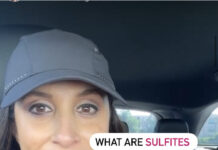This Is Beginning To Feel Like The Marathon We Knew It Would Be
It has felt like a long 3 weeks for those that have been following the social distancing/Stay At Home Orders. Unfortunately, we must be patient and accept that we need to settle in for several more weeks. This week the social distancing recommendations were extended until May 4th. If you are watching the trends, however, it looks as though the virus may not peak in many parts of the country until after that date. That would indicate the orders may need to be extended further.
The Planted Seed Continues To Grow
Many people have asked why it continues spreading if we have already been staying home. The answer lies in how quickly (or in some cases slowly) we began social distancing. If you refer to the blog from last week, you can see that 1 person infected can lead to 400 people infected in 30 days. The numbers we see now climbing are a result of those infected and those that spread the virus prior to social distancing.
Rapidly Evolving Fund Of Knowledge
There are dozens and dozens of papers/studies about Coronavirus since it was first discovered in December 2019. In the Science world that is a lot. We know so much more about this virus this week than we did even last week or the week before. Open any news feed and there is new information daily, if not hourly some days. There are some brilliant minds that have put all their waking hours into learning as much about this virus as quickly as possible in hopes to save lives.
Social Distance To Save A Life
We can’t all be scientists or on the front line of this crisis, but we can all social distance. We can all stay home except when absolutely necessary. Limited trips to grocery stores/pharmacies, work, outdoor activities such as runs/bike rides are all we should be leaving our house for. The power in social distancing can not be underestimated. If you follow the Stay At Home orders, you may save a life of a loved one or someone you may never meet. It is that simple.
Some Takeaways
People can be contagious up to 14 days prior to onset of symptoms, with the highest risk of transmission 2-3 days prior to symptoms.
The virus travels in respiratory droplets so the highest risk of transmission occurs from touching a surface that came in contact with a respiratory droplet (sneezing, coughing, saliva etc).
New evidence that these droplets can stay in the air for up to 3 hours. If you spend 10 -15 minutes in an area with these respiratory droplets, it can be considered an exposure.
Even while going for a run or bike ride, you should stay 6 feet from others. If a person coughs or sneezes and you bike through that area or run beside them, the droplets can land on your clothing and remain there for hours. If you then touch your clothes and then your face, mouth, nose, you can become a carrier of the virus.
We think that not only do underlying medical conditions determine how sick you may get from the virus, but also how much of the virus you were exposed to. Some medical procedures such as intubation would be a higher exposure than say running through a space that someone sneezed in or walking by an infected person at a grocery store.
Cloth masks may not protect you from getting the virus, but it will help you from spreading it to others. That is huge! That could mean if you unknowingly have the virus, if you wear a mask over 30 days, you may have prevented several hundred people from getting sick. Here is CDC’s latest recommendations for masks.
Though touching an item at a grocery store that is contaminated might be considered low risk, it is still in your best interest to disinfect everything before it comes into your house. This includes your clothing. Low risk does not mean no risk. Here is a video on how to properly wipe down groceries.
Put Your Own Mask On First, For The Best Chance At Helping Others
Every time we fly, the flight attendants share the same safety information. It always includes a run down of the emergency evacuation procedures, location of emergency exits and very specific instructions to put your own mask on before helping someone else with theirs. This Covid Pandemic is an emergency situation like none other that we have experienced in our lives. If you don’t take care of yourself, you won’t be able to sustain this unprecedented situation. Which then in turn will limit your ability to help others. If you take care of yourself and your health, you are one less person that may need medical care which leaves more beds open for those that contract the virus. Maybe you feel helpless because you don’t have the resources, money or access to help others right now. But if you take care of yourself, when this is over, you may have the opportunity to help someone you didn’t fare as well as you.
It is more vital than ever to practice Self-Care. Eat healthy. Avoid food triggers that may make you feel bad. For some like me, I still need to avoid sulfites, even though this does make grocery shopping more challenging than it already is. For Diabetics, it is still important to remember to not make your best effort to avoid refined sugars and starches.
Be creative with exercise. Go for a walk or run outside. It’s amazing what a little sunshine can do to your mood. Unplug. Limit your time to read/watch the news to twice a day. No need to rehash the same regurgitated news all day long. Meditate. Do that puzzle you’ve always wanted to do. Get dressed every day. Maybe start with putting on your work out clothes in the morning. When it’s finally time to work out, you have one less excuse.
Smile! It’s hard to be in a bad mood when you are smiling. Try it!




